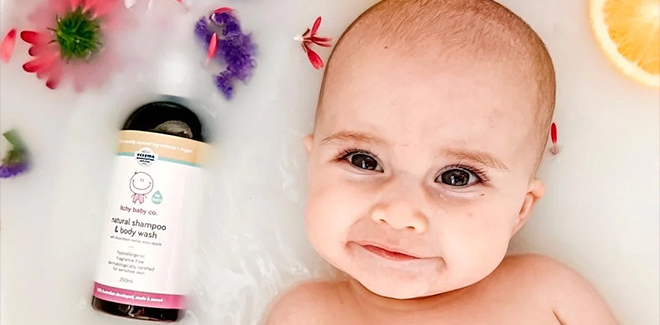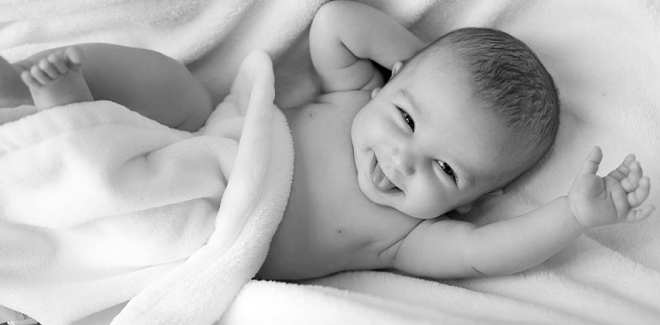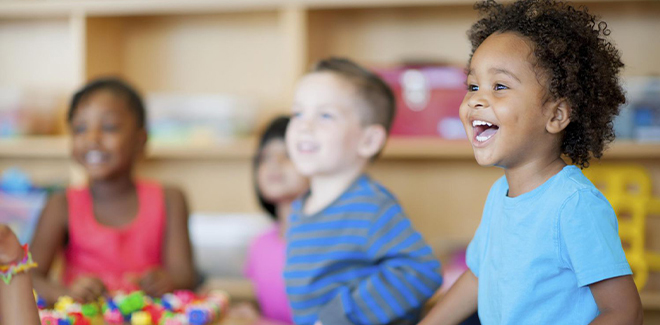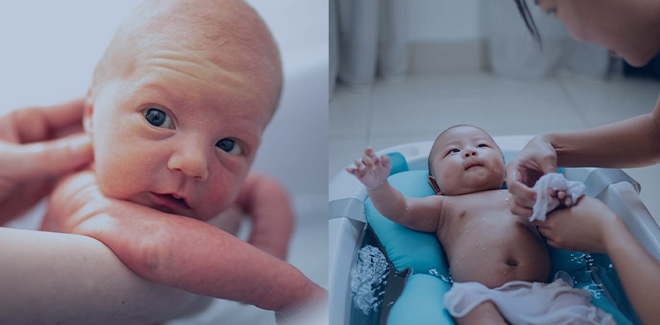In addition to being free from harsh chemicals, the best baby shampoo and body wash should possess a tear-free formula. This means that the product will not cause discomfort or stinging sensations if it comes into contact with the baby’s eyes, ensuring a pleasant bath time experience for both the child and the caregiver. A gentle cleansing action is also important, as it will effectively remove dirt and impurities without stripping the skin of its natural oils. A balanced pH level is another crucial aspect, as it helps maintain the skin’s natural barrier function and prevents dryness or irritation.
Furthermore, a desirable baby shampoo and body wash should be dermatologist-tested and pediatrician-approved. This guarantees that the product has undergone rigorous testing for safety and efficacy. Additionally, a mild and pleasant fragrance, derived from natural sources, can enhance the overall bathing experience without overwhelming the baby’s sensitive senses. Packaging that is easy to use, such as pump dispensers, can make bath time more convenient for parents, ensuring a steady and controlled application of the product. Ultimately, the best baby shampoo and body wash should embody a harmonious blend of gentle ingredients, tear-free formulation, mild cleansing, proper pH balance, and expert validation to provide a nourishing and enjoyable bathing routine for both babies and their caregivers.

A review of the best baby shampoos and body washes
When it comes to the best baby shampoos and body washes, several brands stand out for their commitment to gentle, safe, and effective products for infants and children. Here’s a quick overview of some of the top options:
- Cetaphil Baby Wash and Shampoo: Known for its dermatologist-recommended formulas, Cetaphil offers a gentle and tear-free option that is hypoallergenic and free from parabens, colorants, and mineral oil. It’s designed to cleanse and moisturize without causing irritation.
- Aveeno Baby Wash & Shampoo: Aveeno’s baby wash and shampoo features natural oat extract, which is known for its soothing properties. This tear-free formula is gentle on sensitive skin and helps maintain the skin’s natural moisture barrier.
- Mustela Baby 2-in-1 Cleansing Gel: Mustela is a brand that focuses on creating products specifically for babies and children. Their 2-in-1 cleansing gel is formulated with gentle plant-based ingredients and is soap-free, making it suitable for newborns and infants.
- Babyganics Baby Shampoo + Body Wash: Babyganics offers a plant-based, foaming formula that is free from sulfates, phthalates, and artificial fragrances. It’s designed to be non-allergenic and gentle on the skin while effectively cleaning.
- Burt’s Bees Baby Shampoo & Wash: Burt’s Bees is known for its natural products, and their baby shampoo and wash is no exception. It contains coconut and sunflower oils for gentle cleansing and moisturizing, and is pediatrician-tested.
- Johnson’s Baby Head-to-Toe Wash: A long-standing name in baby care, Johnson’s offers a head-to-toe wash that is hypoallergenic and pH-balanced. It’s formulated to be ultra-mild and gentle for newborns.
- Earth Mama Simply Non-Scents Baby Wash: This brand focuses on organic and natural ingredients. Their non-scented baby wash is made with calendula and aloe, providing gentle cleansing for sensitive skin.
Remember that every baby’s skin is unique, so it’s important to do a patch test before fully incorporating a new product into their routine. Additionally, while these options are highly regarded, individual preferences and sensitivities can vary, so consulting with a pediatrician can also provide valuable guidance in choosing the best baby shampoo and body wash for your child.
When to use shampoo on your baby
It is generally recommended that you start using shampoo on your baby’s hair once they have grown a significant amount of hair, which may be around one to two months of age. Before that, plain water is usually enough to clean their scalp. Here’s a rough guide on when and how to introduce shampoo into your baby’s bathing routine:
- Wait for hair growth: Babies often have very fine and sparse hair and their scalps are delicate. During the first few weeks, you can simply use water and a soft, damp washcloth to clean his scalp and hair. This helps maintain cleanliness without using harsh products.
- Introduce Shampoo Gradually: As your baby’s hair starts to grow thicker and they are a few weeks old, you can begin using a mild, hypoallergenic baby shampoo. Choose a tear-free formula to ensure it won’t irritate their eyes if any suds come into contact.
- Frequency: Babies don’t need frequent hair washing, as their scalps are still developing natural oils that protect their skin. You can start with shampooing their hair once or twice a week, or as needed if their hair becomes visibly dirty or oily.
- Technique: When using shampoo, gently wet your baby’s hair with warm water. Apply a small amount of baby shampoo to your hand, lather it by rubbing your hands together, and then softly massage it into your baby’s scalp using your fingertips. Be careful not to scrub too vigorously, as a baby’s scalp can be sensitive.
- Rinse Thoroughly: After massaging, rinse your baby’s hair thoroughly with warm water. Make sure no shampoo residue remains on their scalp.
- Keep it Tear-Free: Always choose a baby shampoo that is labeled as tear-free. This means it won’t cause discomfort if it accidentally gets into your baby’s eyes during the bathing process.
- Observe Skin Reactions: Every baby is different, so keep an eye out for any signs of skin irritation or allergic reactions after using a new shampoo. If you notice any redness, rash, or unusual reactions, discontinue use and consult your pediatrician.
Remember, a baby’s skin is sensitive, and their hair care routine should be gentle and minimal. Using a mild and appropriate baby shampoo along with proper technique will help keep your baby’s hair clean and healthy without causing any discomfort.

Baby shampoo and bathtime safety
Baby shampoo and bath time safety are essential considerations for parents and caregivers to ensure a positive and secure bathing experience for infants and young children. Here are some key tips to keep in mind:
- Supervision is Crucial: Never leave a baby or young child unattended during bath time, even if it’s just for a few seconds. Accidents can happen quickly, so always stay within arm’s reach.
- Maintain the Right Water Temperature: The water should be comfortably warm, around 100°F (37.8°C). Use your wrist or the inside of your elbow to test the water temperature before placing your baby in the tub. A bath thermometer can also help ensure the water is at a safe temperature.
- Gather Supplies Beforehand: Have everything you need within reach before placing your baby in the water. This includes baby shampoo, soap, washcloth, towel, diaper, and clean clothes. This prevents the need to leave your baby unattended during bath time.
- Use a Slip-Resistant Bathing Surface: A baby bathtub with a slip-resistant bottom can provide stability and prevent your baby from sliding around. If you’re using a regular bathtub, consider using a non-slip mat.
- Test the shampoo on a small area: Before using a new shampoo, test a small amount on your baby’s skin to make sure there is no allergic reaction. Discontinue use if any skin rash occurs.
- Choose Tear-Free Shampoo: Opt for a tear-free baby shampoo to avoid discomfort if the shampoo comes into contact with your baby’s eyes.
- Gentle Shampooing: When applying shampoo, use a minimal amount and be gentle. Avoid getting shampoo directly into your baby’s eyes. Gently massage the shampoo into their scalp using your fingertips.
- Keep Soap Away from Eyes and Mouth: While washing your baby’s body, be careful not to get soap in their eyes or mouth. Use a damp washcloth to clean their face, avoiding the eyes, nose, and mouth.
- Support Your Baby’s Head: For newborns and young infants, ensure that their head and neck are well-supported to prevent any accidental submersion in water.
- Limit Bath Time: Babies do not need long baths. Five to ten minutes is usually sufficient. Prolonged exposure to water can lead to dry skin.
- Dry Thoroughly: After bath time, gently pat your baby’s skin dry with a soft towel. Pay extra attention to the skin folds to prevent moisture buildup.
- Trim Nails: Keep your baby’s nails trimmed to avoid scratching them or accidentally scratching yourself while bathing them.
- Have a Firm Grip: When lifting your baby out of the water, support their head and neck with one hand and their body with the other. A wet baby can be slippery, so make sure you have a secure hold.
By following these safety tips and maintaining a watchful presence, bath time can be a delightful and bonding experience for both you and your baby. Always prioritize their safety and comfort to make bath time enjoyable and stress-free.












